Victory Day (9 May)
| Victory Day |
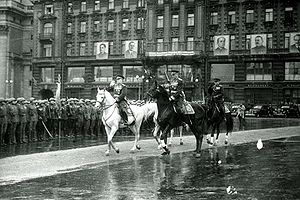
Marshal Georgy Zhukov and Marshal Rokossovsky during the Victory Parade |
| Official name |
Russian: День Победы, Den' Pobedy |
| Observed by |
Armenia, Azerbaijan, Belarus, Republika Srpska, Serbia, Georgia, Germany, Israel, Kazakhstan, Kyrgyzstan, Moldova, Montenegro, Russia, Tajikistan, Turkmenistan, Ukraine, Uzbekistan |
| Date |
May 9 |

Marshal Zhukov reading the German capitulation. Seated on his right is Air Chief Marshal Arthur Tedder.
The Soviet Victory Day[1] or May 9 marks the capitulation of Nazi Germany to the Soviet Union in the Second World War (also known as the Great Patriotic War in the Soviet Union and some post-Soviet states). It was first inaugurated in the fifteen republics of the Soviet Union, following the signing of the surrender document late in the evening on 8 May 1945 (9 May by Moscow Time). It happened after the original capitulation that Germany earlier agreed to the joint Allied forces of the Western Front. The Soviet government announced the victory early on 9 May after the signing ceremony in Berlin.[2] Though the official inauguration happened in 1945 (which means it has been celebrated since 1946), the holiday became a non-labour day only in 1965 and only in some of the countries.
In communist East Germany, a Soviet-style "Victory Day" on May 9th was an official holiday from 1975 until the end of the republic in 1990. Prior to that, "Liberation Day" was celebrated on May 8th, between 1950 and 1966, and again on the 40th anniversary in 1985. Since 2002, the German state of Mecklenburg-Vorpommern has observed a commemoration day known as the "Day of Liberation from National Socialism, and the End of the 2nd World War".[3]
In 1988, just before the collapse of the Soviet Union, Victory Day ceased to be observed in Uzbekistan, but was partially restored in 1999 as Memorial/Remembrance Day.[4] After their separation from the Soviet Union, the Baltic countries now commemorate the end of WWII on May 8, the Victory in Europe Day.[5]
History

Field-Marshal Keitel signing the ratified surrender terms for the German military
Two separate capitulation events took place at the time. First, the capitulation to the Allied nations in Reims was signed on 7 May 1945, effective 23:01 CET 8 May. This date is commonly referred to as the V-E Day (Victory in Europe Day) in most western European countries. The other World War II victory day, the V-J day (Victory in Japan Day) is commemorated in August, and is of considerably lesser significance in Europe.
However, the Soviet Union's only representative in Reims was General Ivan Susloparov, the Military Liaison Mission Commander. General Susloparov's scope of authority was not entirely clear, and he had no means of immediate contact with the Kremlin, but nevertheless decided to sign for the Soviet side. Susloparov was caught off guard; he had no instructions from Moscow. But if he did not sign, he risked a German surrender without Soviet participation. However, he noted that it could be replaced with a new version in the future. Joseph Stalin was later displeased by these events, believing that the German surrender should have been accepted only by the envoy of the USSR Supreme command and signed only in Berlin and insisted the Reims protocol be considered preliminary, with the main ceremony to be held in Berlin, where Marshal Zhukov was at the time, as the latter recounts in his memoirs:[6]
| “ |
[Quoting Stalin:] Today, in Reims, Germans signed the preliminary act on an unconditional surrender. The main contribution, however, was done by Soviet people and not by the Allies, therefore the capitulation must be signed in front of the Supreme Command of all countries of the anti-Hitler coalition, and not only in front of the Supreme Command of Allied Forces. Moreover, I disagree that the surrender was not signed in Berlin, which was the center of Nazi aggression. We agreed with the Allies to consider the Reims protocol as preliminary. |
” |
Therefore, another ceremony was organized in a surviving manor in the outskirts of Berlin late on 8 May, when it was already May 9 in Moscow due to the difference in time zones. Field-Marshal Wilhelm Keitel submitted the capitulation of the Wehrmacht to Marshal Georgy Zhukov in the Soviet Army headquarters in Berlin-Karlshorst. To commemorate the victory in the war, the ceremonial Moscow Victory Parade was held in the Soviet capital on 24 June 1945 (four years and two days after the beginning of Operation Barbarossa - the invasion of the Soviet Union).
Celebration
During the Soviet Union's existence, May 9 was celebrated throughout the USSR and in the countries of the Eastern Bloc. Though the holiday was introduced in many Soviet republics approximately between 1946 and 1950, it only became a non-labour day in Ukrainian (1963) and Russian (1965) SSRs. In the latter one, a weekday off (usually a Monday) was given starting 1966 if 9 May was to fall on a weekend (Saturday or Sunday).
After the fall of the communism in Central and Eastern Europe, most former USSR countries retained the celebration as a national holiday even though it was not openly celebrated by some of them. Today and traditionally, ceremonial military parades are held on the day, such as the one in Moscow on the Red Square.
Countries in which May 9 is celebrated

Victory Day celebrations in
Moscow, 9 May 2005
 Armenia has officially recognized 9 May since 1946;
Armenia has officially recognized 9 May since 1946; Azerbaijan has officially recognized 9 May since 1946;
Azerbaijan has officially recognized 9 May since 1946; Belarus has officially recognized 9 May since 1946 and considered it non-labor in the past;
Belarus has officially recognized 9 May since 1946 and considered it non-labor in the past;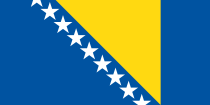 Republika Srpska, one of two entities constituting Bosnia and Herzegovina has officially recognized May 9 as the V-Day over Fascism and considers it a non-working day.[7]
Republika Srpska, one of two entities constituting Bosnia and Herzegovina has officially recognized May 9 as the V-Day over Fascism and considers it a non-working day.[7]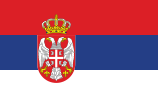 Serbia celebrates 9 May as the Victory Day over Fascism but it's a working holiday. Still many people gather to mark the anniversary with the war veterans, including Serbian army, Minister of Defense and the President.
Serbia celebrates 9 May as the Victory Day over Fascism but it's a working holiday. Still many people gather to mark the anniversary with the war veterans, including Serbian army, Minister of Defense and the President. Georgia has officially recognized 9 May since 1946;
Georgia has officially recognized 9 May since 1946; East Germany recognized Tag des Sieges (Victory Day) on May 9th as a public holiday between 1975 and the end of the republic in 1990. Earlier, the Tag der Befreiung (Day of liberation) was celebrated on May 8th as a public holiday, from 1950 to 1966, and on the 40th anniversary in 1985.
East Germany recognized Tag des Sieges (Victory Day) on May 9th as a public holiday between 1975 and the end of the republic in 1990. Earlier, the Tag der Befreiung (Day of liberation) was celebrated on May 8th as a public holiday, from 1950 to 1966, and on the 40th anniversary in 1985. Germany does not officially recognize May 9th as a holiday. However, celebrations continue to take place in some areas of the former East Germany. Also, on May 8th, the German state of Mecklenburg-Vorpommern since 2002 has recognized a commemorative day Tag der Befreiung vom Nationalsozialismus und der Beendigung des 2. Weltkrieges (Day of Liberation from National Socialism, and the End of the 2nd World War).
Germany does not officially recognize May 9th as a holiday. However, celebrations continue to take place in some areas of the former East Germany. Also, on May 8th, the German state of Mecklenburg-Vorpommern since 2002 has recognized a commemorative day Tag der Befreiung vom Nationalsozialismus und der Beendigung des 2. Weltkrieges (Day of Liberation from National Socialism, and the End of the 2nd World War). Israel has officially recognized 9 May since 2000.
Israel has officially recognized 9 May since 2000.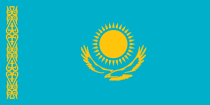 Kazakhstan has officially recognized 9 May since 1947. It's a non-working day. The holiday is sometimes celebrated in connection with other national holidays on May 10 and 11.
Kazakhstan has officially recognized 9 May since 1947. It's a non-working day. The holiday is sometimes celebrated in connection with other national holidays on May 10 and 11. Kyrgyzstan has officially recognized 9 May since 1946;
Kyrgyzstan has officially recognized 9 May since 1946; Moldova has officially recognized 9 May since 1951;
Moldova has officially recognized 9 May since 1951;
 Russia has officially recognized 9 May since 1946 and considers it a non-working day even if it falls on a weekend (in which case any following Monday will be non-working);
Russia has officially recognized 9 May since 1946 and considers it a non-working day even if it falls on a weekend (in which case any following Monday will be non-working); Tajikistan has officially recognized 9 May since 1946;
Tajikistan has officially recognized 9 May since 1946; Turkmenistan has officially recognized 9 May since 1946;
Turkmenistan has officially recognized 9 May since 1946;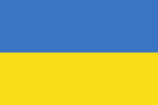 Ukraine has officially recognized 9 May since 1946 and considers it a non-working day; Lviv Oblast does not recognize Victory Day, but rather recognizes the day as a memorial to all wartime victims of both the Soviet and Nazi regimes [8].
Ukraine has officially recognized 9 May since 1946 and considers it a non-working day; Lviv Oblast does not recognize Victory Day, but rather recognizes the day as a memorial to all wartime victims of both the Soviet and Nazi regimes [8]. Uzbekistan has officially recognized 9 May from 1946 until 1988. Starting 1999, the holiday was restored as "Memorial/Remembrance Day".[4]
Uzbekistan has officially recognized 9 May from 1946 until 1988. Starting 1999, the holiday was restored as "Memorial/Remembrance Day".[4]
Russophone populations in many world countries celebrate the holiday regardless of its local status. Many Russian communities in United States and Canada, also for example in Estonia, Latvia, Lithuania [9] organize public gatherings and even parades on this day.[10] In Europe, some multilanguage broadcasting television chains translate the "Victory speech" of the Russian president and the parade on Red Square.[11]
Soviet and post-Soviet symbols associated with the Victory Day

The ribbon of
Saint George. This is worn in a manner to celebrate the holiday

George's Ribbon attached to car antenna
- Victory Banner
- Ribbon of Saint George, colloquially known as George's Ribbon (Георгиевская ленточка): originally associated with the Order of St. George (officers) and the St. George Cross (enlisted ranks) of the Russian Empire, the nation's highest award for military valor. It was reintroduced in the Soviet Union and used for the Order of Glory and the Medal For the Victory Over Germany in the Great Patriotic War 1941–1945. The Order of St. George was reintroduced in the Russian Federation in 2000 as a military award.
During the Victory Day parade 2010, President Dmitry Medvedev and many other VIPs were seen wearing the commemorative ribbon on the lapel of their jackets.
Soviet Union
|
|
Medal For the Victory Over Germany in the Great Patriotic War 1941–1945 |
|
|
Medal For the Capture of Berlin |
|
|
Medal for the 20th Anniversary of the Victory in the Great Patriotic War of 1941–1945 |
|
|
Medal for the 30th Anniversary of the Victory in the Great Patriotic War of 1941–1945 |
|
|
Medal for the 40th Anniversary of the Victory in the Great Patriotic War of 1941–1945 |
Russia
|
|
Medal for the 50th Anniversary of the Victory in the Great Patriotic War of 1941–1945 |
|
|
Medal for the 60th Anniversary of the Victory in the Great Patriotic War of 1941–1945 |
Ukraine
|
|
Medal for the 60th Anniversary of the Victory in the Great Patriotic War of 1941–1945 |
Kazakhstan
|
|
Medal for the 60th Anniversary of the Victory in the Great Patriotic War of 1941–1945 |
See also
- End of World War II in Europe
- German Instrument of Surrender, 1945
- Minute of Silence
- Victory Day in other countries
- Victory in Europe Day
- Victory over Japan Day
- Hero city
References
External links
 Public holidays in Russia Public holidays in Russia |
|
New Year's Day/New Year · Defender of the Fatherland Day · International Women's Day · International Workers' Day · Victory Day · Russia Day · Unity Day |
|
|
Annual Moscow Victory Parade |
|
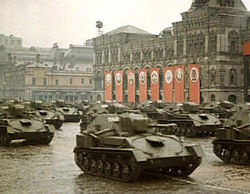 |
By year |
1945 · 1965 · 1985 · 1990 · 1995 · 1996 · 1997 · 1998 · 1999 · 2000 · 2001 · 2002 · 2003 · 2004 · 2005 · 2006 · 2007 · 2008 · 2009 · 2010
|
 |
|
| Features |
|
|
| Related |
|
|





 Armenia has officially recognized 9 May since 1946;
Armenia has officially recognized 9 May since 1946; Azerbaijan has officially recognized 9 May since 1946;
Azerbaijan has officially recognized 9 May since 1946; Belarus has officially recognized 9 May since 1946 and considered it non-labor in the past;
Belarus has officially recognized 9 May since 1946 and considered it non-labor in the past; Republika Srpska, one of two entities constituting Bosnia and Herzegovina has officially recognized May 9 as the V-Day over Fascism and considers it a non-working day.[7]
Republika Srpska, one of two entities constituting Bosnia and Herzegovina has officially recognized May 9 as the V-Day over Fascism and considers it a non-working day.[7] Serbia celebrates 9 May as the Victory Day over Fascism but it's a working holiday. Still many people gather to mark the anniversary with the war veterans, including Serbian army, Minister of Defense and the President.
Serbia celebrates 9 May as the Victory Day over Fascism but it's a working holiday. Still many people gather to mark the anniversary with the war veterans, including Serbian army, Minister of Defense and the President. Georgia has officially recognized 9 May since 1946;
Georgia has officially recognized 9 May since 1946; East Germany recognized Tag des Sieges (Victory Day) on May 9th as a public holiday between 1975 and the end of the republic in 1990. Earlier, the Tag der Befreiung (Day of liberation) was celebrated on May 8th as a public holiday, from 1950 to 1966, and on the 40th anniversary in 1985.
East Germany recognized Tag des Sieges (Victory Day) on May 9th as a public holiday between 1975 and the end of the republic in 1990. Earlier, the Tag der Befreiung (Day of liberation) was celebrated on May 8th as a public holiday, from 1950 to 1966, and on the 40th anniversary in 1985. Germany does not officially recognize May 9th as a holiday. However, celebrations continue to take place in some areas of the former East Germany. Also, on May 8th, the German state of Mecklenburg-Vorpommern since 2002 has recognized a commemorative day Tag der Befreiung vom Nationalsozialismus und der Beendigung des 2. Weltkrieges (Day of Liberation from National Socialism, and the End of the 2nd World War).
Germany does not officially recognize May 9th as a holiday. However, celebrations continue to take place in some areas of the former East Germany. Also, on May 8th, the German state of Mecklenburg-Vorpommern since 2002 has recognized a commemorative day Tag der Befreiung vom Nationalsozialismus und der Beendigung des 2. Weltkrieges (Day of Liberation from National Socialism, and the End of the 2nd World War). Israel has officially recognized 9 May since 2000.
Israel has officially recognized 9 May since 2000. Kazakhstan has officially recognized 9 May since 1947. It's a non-working day. The holiday is sometimes celebrated in connection with other national holidays on May 10 and 11.
Kazakhstan has officially recognized 9 May since 1947. It's a non-working day. The holiday is sometimes celebrated in connection with other national holidays on May 10 and 11. Kyrgyzstan has officially recognized 9 May since 1946;
Kyrgyzstan has officially recognized 9 May since 1946; Moldova has officially recognized 9 May since 1951;
Moldova has officially recognized 9 May since 1951;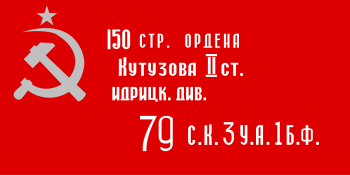
 Russia has officially recognized 9 May since 1946 and considers it a non-working day even if it falls on a weekend (in which case any following Monday will be non-working);
Russia has officially recognized 9 May since 1946 and considers it a non-working day even if it falls on a weekend (in which case any following Monday will be non-working); Tajikistan has officially recognized 9 May since 1946;
Tajikistan has officially recognized 9 May since 1946; Turkmenistan has officially recognized 9 May since 1946;
Turkmenistan has officially recognized 9 May since 1946; Ukraine has officially recognized 9 May since 1946 and considers it a non-working day; Lviv Oblast does not recognize Victory Day, but rather recognizes the day as a memorial to all wartime victims of both the Soviet and Nazi regimes [8].
Ukraine has officially recognized 9 May since 1946 and considers it a non-working day; Lviv Oblast does not recognize Victory Day, but rather recognizes the day as a memorial to all wartime victims of both the Soviet and Nazi regimes [8]. Uzbekistan has officially recognized 9 May from 1946 until 1988. Starting 1999, the holiday was restored as "Memorial/Remembrance Day".[4]
Uzbekistan has officially recognized 9 May from 1946 until 1988. Starting 1999, the holiday was restored as "Memorial/Remembrance Day".[4]


 Works related to German Instrument of Surrender (7 May 1945) at Wikisource
Works related to German Instrument of Surrender (7 May 1945) at Wikisource Works related to German Instrument of Surrender (8 May 1945) at Wikisource
Works related to German Instrument of Surrender (8 May 1945) at Wikisource
